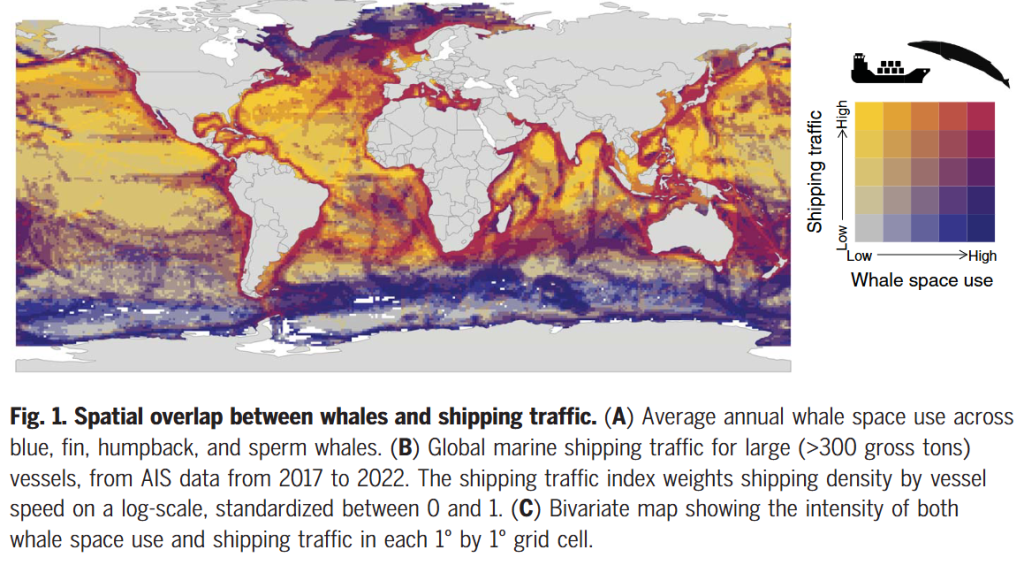New research finds that efforts to mitigate ship strikes, such as implementing vessel speed reductions and rerouting shipping lanes, are urgently needed to protect vulnerable whale populations, particularly in under-researched regions like the coasts of South America and southern Africa.
The research article “Ship collision risk threatens whales across the world’s oceans“, published by Science, explains that expanding protective measures by just 2.6% of the ocean could significantly reduce risks, largely by optimizing regulations within existing management zones. Long-term strategies, including enhanced monitoring of shipping lanes, stricter enforcement of measures, and adapting strategies to shifts in whale and shipping patterns, are crucial.
In addition to ship strikes, whales are impacted by noise pollution from vessels, which disrupts their behavior and communication and increases stress. Speed reductions can help reduce both ship-strike risks and noise levels.
The study’s modeling also offers insights into other threats, such as fishing gear entanglement and climate-driven shifts in whale distribution. With global goals to protect 30% of the ocean by 2030, identifying whale hotspots and aligning conservation efforts with these areas is timely and essential.

This framework is not only critical for great whales but also provides a blueprint for addressing threats to other marine species affected by shipping, such as smaller cetaceans, sharks, and sea turtles. Leveraging advancements in biologging data and species distribution models can enhance our understanding of marine species’ spatial use and exposure to threats, informing broader conservation initiatives, the researchers note.
Mitigating ship-strike risks and the broader environmental impacts of shipping is vital to conserving ocean ecosystems and reversing the decline in whale populations.

































































